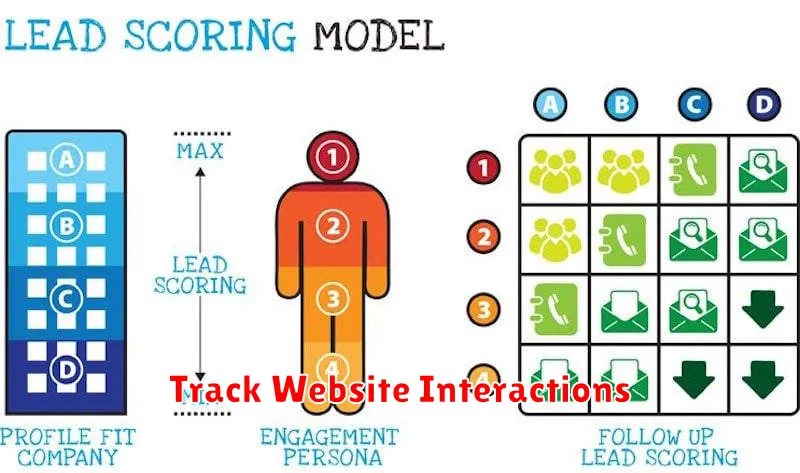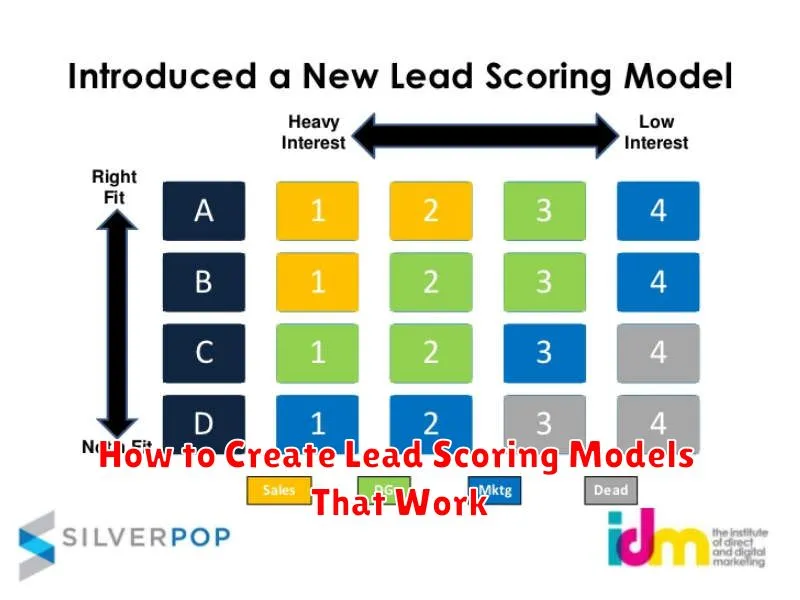In today’s competitive market, effectively managing leads is crucial for business success. Lead scoring provides a systematic way to identify and prioritize high-potential leads, enabling your sales and marketing teams to focus their efforts on the most promising prospects. This article will provide a comprehensive guide on how to create lead scoring models that truly work, transforming your lead management process and driving significant improvements in conversion rates. We will delve into the essential steps involved, from identifying key lead scoring criteria and assigning lead scores to implementation and ongoing optimization. Learn how to leverage lead scoring to nurture and qualify leads, ultimately boosting sales and revenue generation.
Developing effective lead scoring models requires a thoughtful and strategic approach. By understanding your ideal customer profile and their buying journey, you can tailor your scoring system to accurately reflect lead potential. This article will cover various methodologies for developing lead scoring models, including both explicit and implicit scoring criteria. We’ll explore how to choose the right lead scoring software and integrate it with your existing CRM. Whether you’re new to lead scoring or looking to refine your current model, this guide will equip you with the knowledge and tools you need to create lead scoring models that work, maximizing your return on investment and propelling your business forward.
Assign Points Based on Behavior
Behavioral scoring focuses on prospect actions. These actions demonstrate interest and engagement, providing valuable insights into their buying stage. Assigning points based on behavior allows for a dynamic scoring model that adjusts as the prospect interacts with your brand.
Consider actions like:
- Website visits (specific pages like pricing or product pages)
- Content downloads (white papers, case studies)
- Email opens and clicks
- Webinar attendance
- Demo requests
Weight points based on the significance of the action. For example, a demo request should carry more weight than a website visit.
Develop a tiered point system. Lower point values for less significant actions, higher points for actions closer to a purchase decision.
Track Website Interactions

Tracking website interactions is crucial for effective lead scoring. It provides valuable insights into a lead’s level of engagement and interest.
Key interactions to monitor include:
- Page Views: Which pages are they visiting and how frequently?
- Content Downloads: Have they downloaded resources like white papers or ebooks?
- Form Submissions: Which forms have they completed (contact us, demo request, etc.)?
- Event Attendance: Have they registered for or attended webinars or online events?
By assigning point values to these interactions, you can begin to quantify a lead’s engagement and prioritize follow-up activities.
Review and Adjust Scoring Regularly
Lead scoring models aren’t static. Regular review and adjustment are critical for maintaining accuracy and effectiveness. Market conditions, buyer behavior, and your own product offerings can all change over time, impacting the relevance of your scoring criteria.
Establish a regular cadence for reviewing your model’s performance. This might be monthly, quarterly, or bi-annually, depending on the dynamics of your business. Analyze key metrics such as conversion rates at different score thresholds and the overall distribution of leads across score ranges.
Look for areas where the model might be underperforming or overperforming. Are leads with high scores converting at the expected rate? Are leads with low scores being prematurely disqualified? These insights can inform adjustments to your scoring criteria, point values, or even the attributes you’re tracking.
Don’t be afraid to experiment and iterate. Continuous refinement is essential to optimizing your lead scoring model and maximizing its impact on your sales and marketing efforts.

